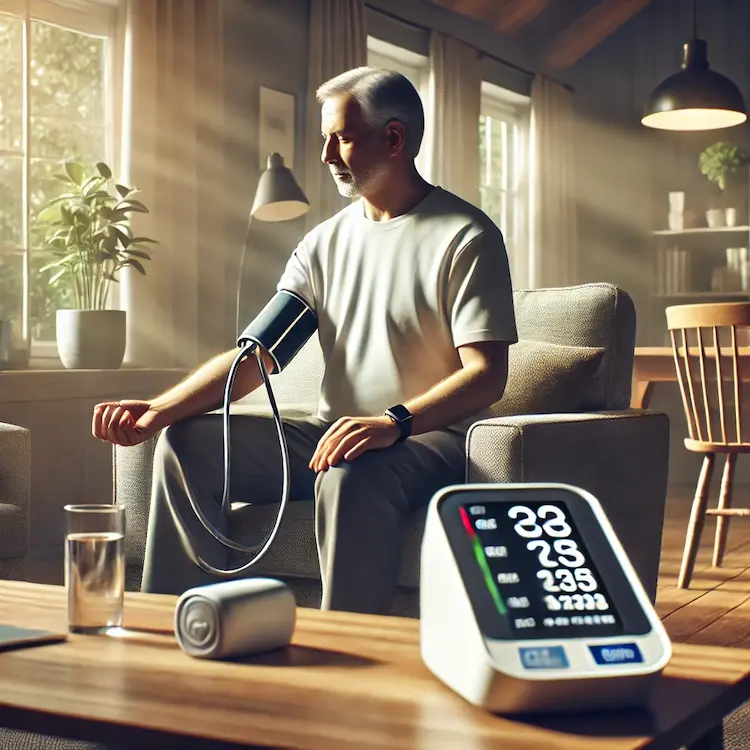Home Blood Pressure Monitoring (HBPM) has emerged as a pivotal tool in managing hypertension, empowering individuals to take charge of their cardiovascular health. Developing personalized HBPM plans ensures accurate measurements, enhances patient engagement, and facilitates better clinical outcomes. This article delves into the intricacies of creating tailored HBPM strategies, underscoring their significance, potential impacts, and practical implementation steps.
Understanding HBPM and Its Importance
HBPM involves regularly measuring blood pressure at home using an automated device. Unlike occasional readings at a doctor’s office, HBPM provides a comprehensive picture of an individual’s blood pressure patterns over time. Personalized HBPM plans are crucial because:
- Accuracy and Consistency: Home measurements eliminate white-coat hypertension—elevated readings due to clinical anxiety—and provide more consistent data.
- Patient Engagement: Active participation in monitoring fosters a sense of responsibility and awareness, promoting adherence to treatment regimens.
- Early Detection: Regular monitoring can identify trends and detect hypertension early, preventing complications like heart disease and stroke.

Potential Health and Societal Impacts
Implementing personalized HBPM plans can lead to significant health and societal benefits:
- Improved Health Outcomes: Consistent monitoring aids in timely interventions, reducing the risk of severe hypertension-related complications.
- Cost-Effectiveness: Early detection and management of hypertension can decrease healthcare costs by minimizing emergency treatments and hospitalizations.
- Enhanced Quality of Life: Better blood pressure control contributes to overall well-being, allowing individuals to lead healthier, more active lives.
- Public Health Benefits: Widespread HBPM adoption can lower the prevalence of uncontrolled hypertension, alleviating the burden on healthcare systems.
Relevant Statistics and Facts
- Hypertension Prevalence: As of 2023, approximately 1.28 billion adults worldwide suffer from hypertension, with many undiagnosed or uncontrolled.
- HBPM Adoption Rates: Studies indicate that individuals using HBPM are twice as likely to have their blood pressure under control compared to those relying solely on clinical measurements.
- Cost Savings: Implementing HBPM programs can reduce healthcare costs by up to 20% through decreased hospital admissions and emergency visits.
Comparing Different Methods and Tools
Several methods and tools facilitate the development of personalized HBPM plans. Understanding their differences is key to selecting the most effective approach.
| Method/Tool |
Description |
Advantages |
Disadvantages |
| Automated BP Monitors |
Electronic devices that measure blood pressure at home. |
Easy to use, consistent readings, digital storage. |
Initial cost, requires regular calibration. |
| Manual BP Monitors |
Traditional sphygmomanometers with a cuff and stethoscope. |
Cost-effective, no need for electricity. |
Requires training for accurate use, less convenient. |
| Mobile Apps |
Applications that track and analyze BP readings. |
Accessible, integrates with other health data. |
Dependent on smartphone usage, data privacy concerns. |
| Telemedicine Platforms |
Online services connecting patients with healthcare providers. |
Facilitates remote consultations, real-time data sharing. |
Requires internet access, potential technical issues. |
Automated BP Monitors
Automated monitors are the most widely used for HBPM due to their ease of use and ability to store multiple readings. They often come with features like irregular heartbeat detection and averaging of multiple readings, enhancing accuracy and reliability.
Manual BP Monitors
While less common, manual monitors are preferred by some for their durability and independence from electronic components. However, accurate use necessitates proper training, making them less suitable for all individuals.
Mobile Apps
Mobile applications complement HBPM by providing platforms for logging readings, setting reminders, and offering insights through data visualization. They enhance user engagement but require users to have compatible devices and a basic understanding of technology.
Telemedicine Platforms
Integrating HBPM with telemedicine allows for seamless communication between patients and healthcare providers. This approach supports personalized care plans and timely adjustments based on real-time data, although it relies heavily on stable internet connections.
Practical Advice for Developing Personalized HBPM Plans
Creating an effective HBPM plan involves several strategic steps tailored to individual needs. Here’s a comprehensive guide:
- Consult with Healthcare Providers
- Discuss the need for HBPM and obtain recommendations on suitable devices.
- Establish target blood pressure goals based on medical history.
- Select the Right BP Monitor
- Choose between automated or manual monitors based on ease of use and accuracy.
- Ensure the device is validated and appropriately sized for the user’s arm circumference.
- Establish a Monitoring Schedule
- Determine optimal times for measurement, typically morning and evening.
- Avoid activities that can skew readings, such as caffeine intake or exercise, before measurements.
- Create a Measurement Log
- Maintain a detailed record of readings, including date, time, and any relevant notes.
- Use mobile apps or dedicated journals to track and analyze data trends.
- Analyze and Interpret Data
- Regularly review blood pressure logs with healthcare providers.
- Identify patterns or triggers that influence blood pressure fluctuations.
- Adjust Lifestyle and Medication as Needed
- Implement dietary changes, exercise routines, and stress management techniques based on monitored data.
- Modify medication regimens under professional guidance to achieve optimal control.
- Ensure Device Accuracy and Maintenance
- Calibrate BP monitors regularly as per manufacturer instructions.
- Replace batteries and maintain the device in good working condition to ensure reliable readings.

Incorporating Visual Aids
Visual aids like tables and charts can enhance understanding and facilitate comparison between different HBPM approaches. Below is an example table comparing key features of HBPM tools:
| Feature |
Automated Monitors |
Manual Monitors |
Mobile Apps |
Telemedicine |
| Ease of Use |
High |
Moderate |
High |
High |
| Cost |
Moderate to High |
Low to Moderate |
Variable |
Variable |
| Accuracy |
High |
High (with training) |
Depends on integration |
High |
| Data Storage |
Yes |
Limited |
Extensive |
Extensive |
| Connectivity |
Limited |
None |
High |
High |
| User Engagement |
Moderate |
Low to Moderate |
High |
High |
Conclusion
Developing personalized HBPM plans is essential for effective hypertension management. By selecting appropriate tools, establishing consistent monitoring routines, and integrating data analysis with professional healthcare, individuals can achieve better blood pressure control and improve overall health outcomes. The societal benefits, including reduced healthcare costs and enhanced public health, further underscore the importance of widespread HBPM adoption.
Summary of Key Takeaways
- Personalization is Key: Tailored HBPM plans enhance accuracy and patient engagement.
- Tool Selection Matters: Automated monitors, manual devices, mobile apps, and telemedicine each offer unique benefits.
- Consistent Monitoring: Regular measurements provide comprehensive blood pressure profiles.
- Data Utilization: Effective logging and analysis facilitate informed medical decisions.
- Collaborative Approach: Partnering with healthcare providers ensures optimal plan adjustments and adherence.
Actionable Recommendations for Readers
- Consult Your Doctor: Before starting HBPM, seek professional advice to determine the best monitoring strategy.
- Invest in a Quality Monitor: Choose a validated BP device that suits your lifestyle and needs.
- Establish a Routine: Integrate blood pressure measurements into your daily schedule for consistency.
- Leverage Technology: Use mobile apps or digital logs to track and analyze your readings effectively.
- Stay Informed: Educate yourself about hypertension and proactive management techniques to support your health journey.

